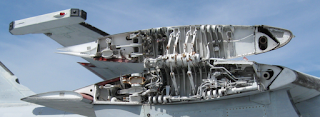Originally posted 2010-04-18.
During this spring break we went on a trip to Washington, DC. After a long winter the flora was eager to flourish again. A thick layer of pollen was obstructing visibility and making life difficult for people with allergies all the way from Florida to DC.
In South Carolina we saw this fine specimen of Luna Moth.
Here is one of them, the well known classical Capitol building.
The most famous museums in Washington belong to the Smithsonian Institution, and the most famous of them is the Air and Space, which takes pride in the quality of their artifacts: it showcases only originals in perfect condition. The admittance is free and the guided tours are excellent. Here are some examples of what is on display.
A nose section of Boeing 747.

The Enterprise orbiter. Smithsonian will get a real space shuttle after they are retired by NASA, if it can find the 20 something million dollar fee NASA wants for shipping and handling.

The retired British-French supersonic passenger jet - the Concorde.
Do you know why the windows are so tiny? It's because Concorde was flying much higher than other passenger jets, and if it lost a regular sized window, it would not be able to descend to safe height before suffocating everybody on board.
Enola Gay is the name of a B-29 plane that dropped an atomic bomb on Hiroshima. This specimen, like all others at Smithsonian, is an original.
The underside of a Predator UAV.
Finally, the UAVs. Boeing X-45 was an experimental Unmanned Aerial Vehicle. UAVs are the future of military aircrafts.
Our volunteer guide, a retired pilot, said that the F-35s are probably the last manned fighters the U.S. will produce.
Some less known museums and attractions.
Botanical Gardens near the Capitol.

The Building Museum was originally a home to the U.S. Pension Bureau headquarters.
Imagine that floor with a fountain in the middle, and plenty of air and natural light filled with desks.
This is what I call a decent office space.

The Basilica of the National Shrine of the Immaculate Conception - the largest Roman Catholic church in North America.

Ghostly Korean War Memorial.
The Postal Museum located near the Union Station is new and surprisingly interesting. You can learn that parts of U.S. Route 1 were originally a trail used by native Americans, and later by mail riders. You can learn that pneumatic mail delivery systems were operating in major U.S. cities in the XIX century.

U.S. Mail travelled under the seat of the driver of that stagecoach.

An ingenious postal snow mobile.
On the way back to Florida, we stopped again in South Carolina and visited Patriots Point Naval and Maritime Museum near Charleston.
Slowly deteriorating USS Yorktown aircraft carrier at Patriot's Point in South Carolina.


The legend for the stats.
International maritime signal flags.

Most planes on USS Yorktown are displayed with their wings folded allowing us to peek into the folding mechanism.









No comments:
Post a Comment